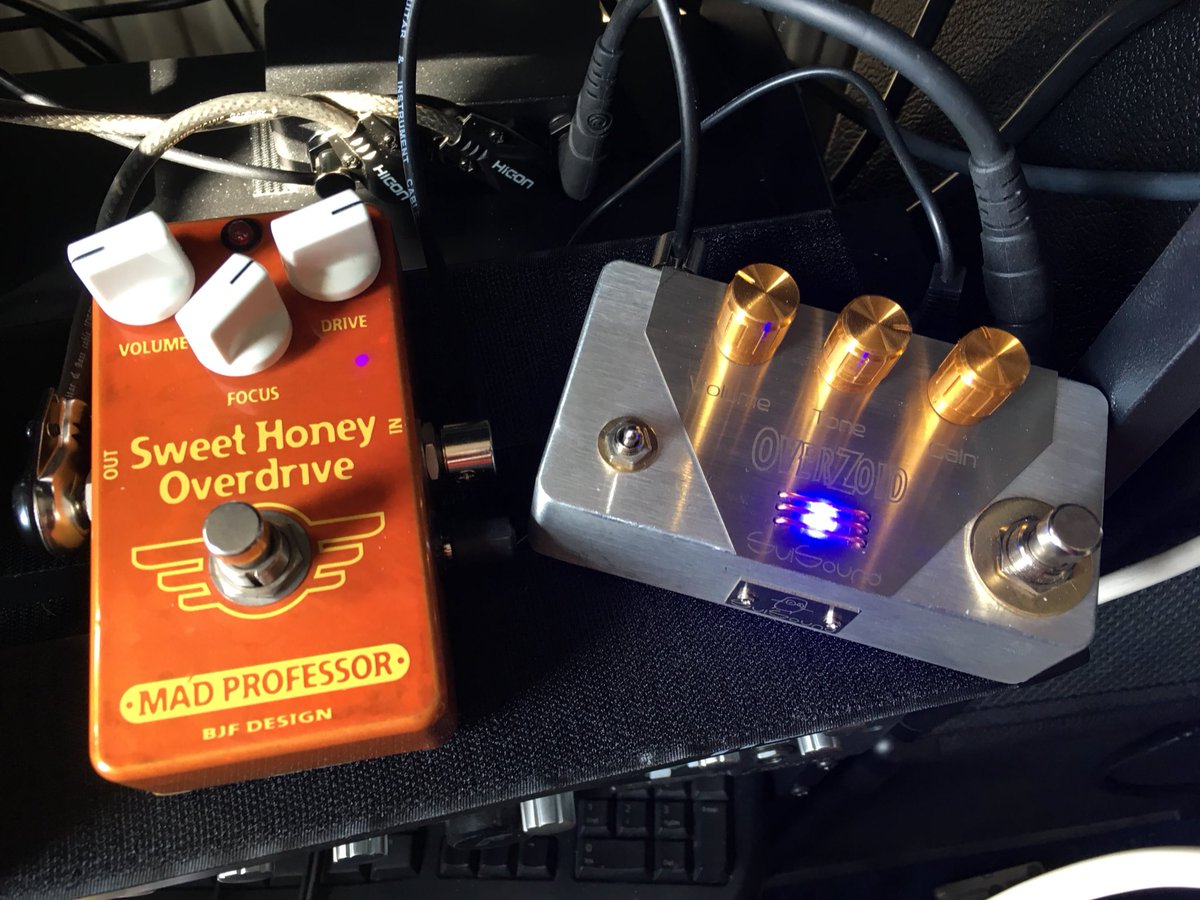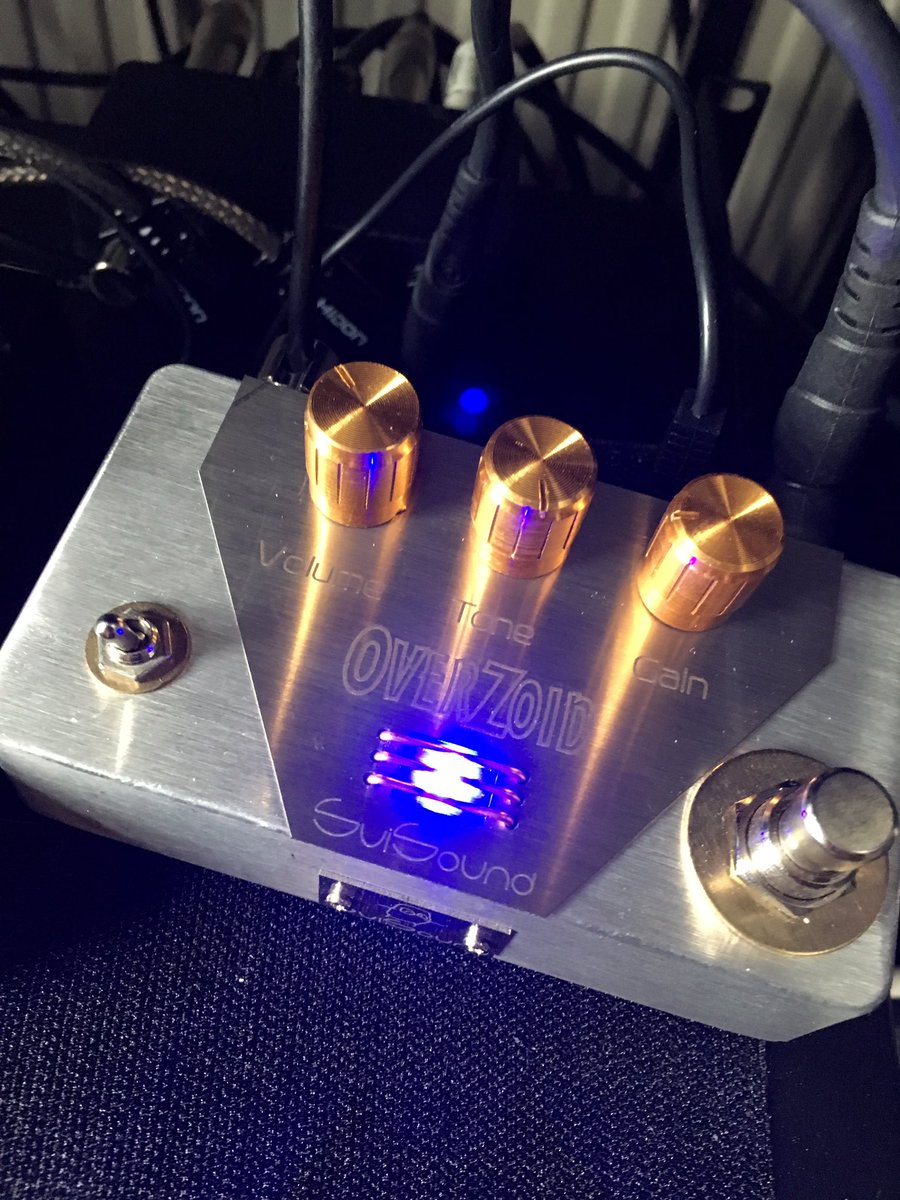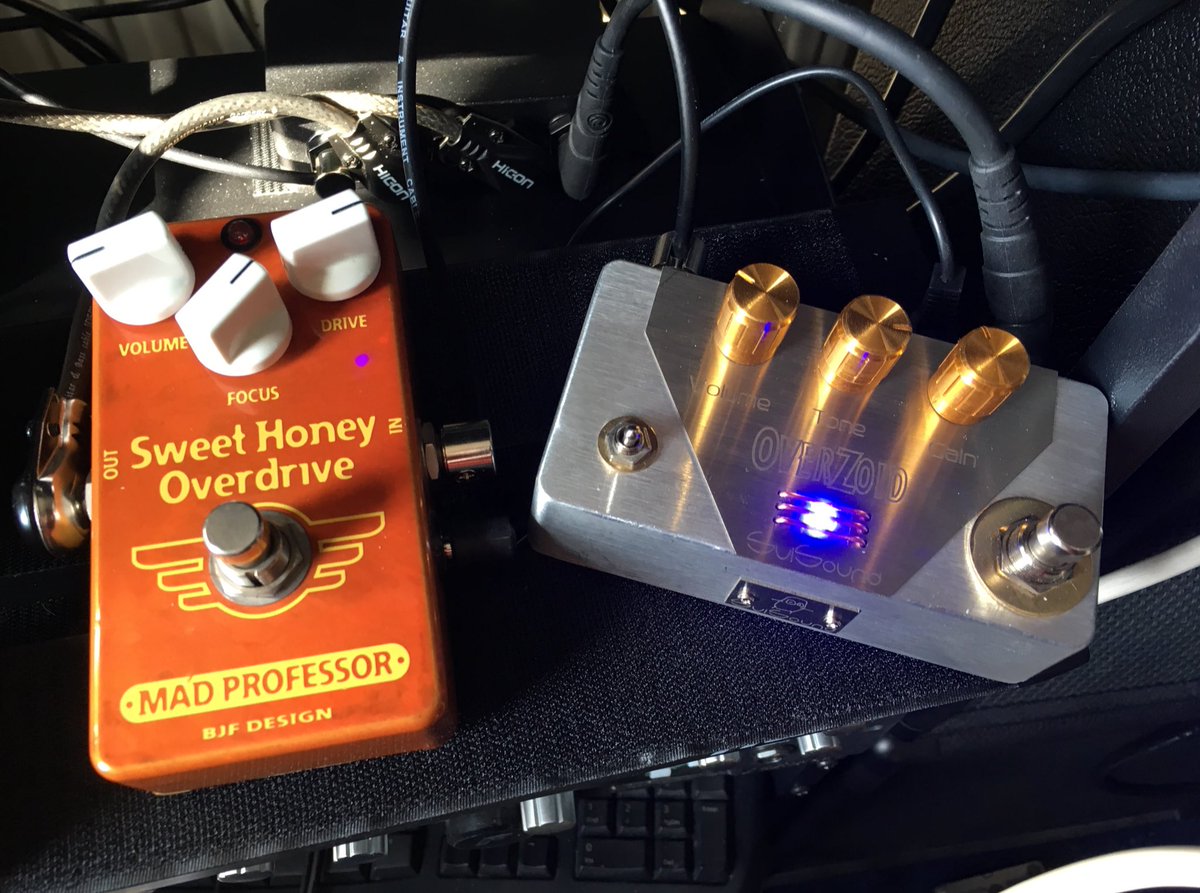This conversation was originally posted to my Twitter feed.
In this #CoffeeAndKlon, I thought I’d talk out the term ‘transparency’. And I shall do my best to do so with a straight face 🙂
Why this topic? Because I got another one of these this week: the SviSound Overzoid od1 🙂

Before the term ‘klone’ was popular, people used to refer to them as ‘transparent overdrives’. I have no idea if Bill Finnegan (creator of the Klon) ever used the term.
These days, if you google the term, you’ll see all sorts of pedals come up in the results. Whatever meaning it had, it’s been hijacked by the quest to be on the front page of search results. Thank you, Google, for turning meaning into a sodding game.
The Klon is famous for its 1 Khz (ish) mid boost. Klones also do this, and many of them also muck about with other parts of your tone. Doesn’t sound very transparent, does it?
- A ‘transparent overdrive’ is basically a ‘sound better’ pedal, rather than a ‘sound different’ pedal. You kick them on, and smile.
- ‘Transparent overdrive’ pedals are also ‘always-on’ pedals. You’re not kicking it on for a solo boost (as a general rule). You’re kicking it on to sound better all the time.
- ‘Transparent overdrives’ aren’t the main source of dirt in a signal chain. They’re run into a dirty amp or pedal to influence what that source of dirt does.
Have I missed out any essential properties of a ‘transparent overdrive’ at all? I think those 3 cover the important bits.
It’s easy to see why the term has been hijacked to such a degree. Who doesn’t wish for a magical thing that instantly – and effortlessly – makes us sound better? There’s money to be made from catering to dreams like that.
With the Klon, the mid-hump makes a low gain tone sound better by emphasising frequencies we all hear well.
And the gain fattens the tone too. A little bit of dirt can make a ‘clean signal’ sound big and warm and fat by the way it messes with our hearing.
But, not every tone needs that, and not every pedal can cope with being on the receiving end of what the Klon does best. And, for me, that’s where the Overzoid fits so nicely.

Let’s take one of my favourite drive pedals – the Sweet Honey Overdrive. For me, the pedal’s sweet spot is with the gain at about 2 o’clock. That’s where I think it sounds best. But I wish it had more usable gain on tap.

With the Overzoid, I can add a little bit of gain on the signal into the SHOD – which gives me quite a bit more gain out the far end. All without changing the overall tone, at least to my ears. It’s far more transparent than a Klon.
I love having this option to hand, because of how I dial in my Les Paul. I predominantly use both pickups together, with both volumes rolled back a bit. Neck is normally between 4-6, and the bridge between 8-10.
Dialling back the volumes like this reduces the output of the guitar (amongst other things). So a low gain pedal like the SHOD becomes an even lower-gain pedal. The Overzoid helps me put that gain back into the end tone, and even add a bit more on top.
Critically, it doesn’t really change the tone much at all. Which means that I’m not getting that ‘out of the mix’ lift that a Klon gives me. And that’s great when I’m recording multiple rhythm guitar tracks, imho.
I’ve had an Overzoid for years, from way before I’d even heard of a Klon. Probably the first boost pedal I ever owned. I think I’ve only had the Forest Green Compressor (which I also use as a boost!) for longer.
So how does the Overzoid compare to an older design, like the MXR Micro Amp – or a newer design, like the TC Electronic Spark? I’ll have a play, and try and answer that next time 🙂
